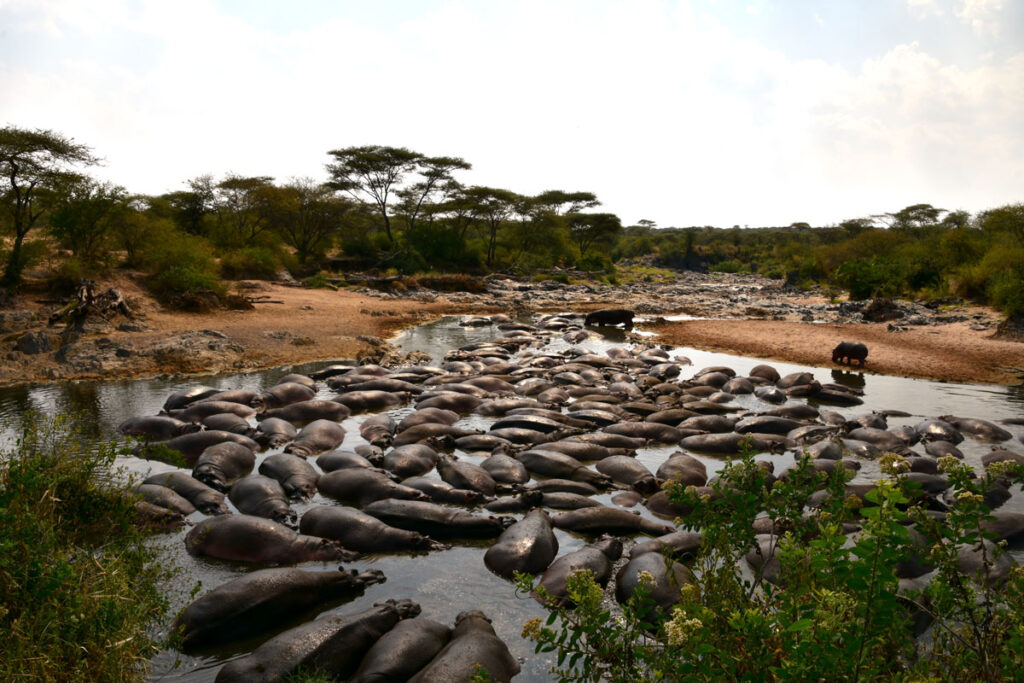A translation of this article was made possible by a partnership with Planeteando. Una traducción de este artículo fue posible gracias a una asociación con Planeteando.
Beavers dam rivers. Ants make mounds and dig tunnels. Foraging fish shift particles on riverbeds. Domestic cattle compact the soil beneath their hooves. For decades, researchers have chronicled the ways that individual species modify their environments. But it’s not clear what all this earth-moving amounts to.
“Biology rivals geophysical forces in landscapes.”
New research estimates that wild animals put 76,000 gigajoules of energy annually into shaping Earth’s landscapes—equivalent to the energy of hundreds of thousands of extreme floods. The energy contribution of livestock exceeds this by 3 orders of magnitude.
“There is this mindset that these are quirky, unique, unusual processes,” said Gemma Harvey, a coauthor and a physical geographer at Queen Mary University of London in the United Kingdom. Researchers often think that animals’ geomorphic, or earth-shaping, impacts are interesting but not all that important, she said. But the new research shows that “biology rivals geophysical forces in landscapes.”
Harvey and her colleagues scoured the literature for reports of animals’ geomorphic actions. From studies in English on terrestrial and freshwater ecosystems, the team identified 500 species that engage in activities such as mixing the soil, digging, burrowing, trampling ground, and constructing mounds and dams.
More than a quarter of these creatures are threatened, declining, or have population trends that scientists know little to nothing about. Their geomorphic processes could be lost from landscapes before we even understand their importance, Harvey said.
The researchers estimated how much energy these 500 animal species put into shaping terrestrial and freshwater environments. Data on the energy creatures expend on biomorphic activities are scarce, Harvey said. The values that do exist range from less than 1% of daily energy expenditure to more than 40% for species such as earthworms, which spend a lot of time burrowing. For 495 wild animal species and five livestock taxa (cattle, feral horse, goat, sheep, and yak) the team estimated collective geomorphic energy based on the global abundance of each species and assuming 1% of animals’ total energy budget being put toward earth-shaping.
“When they use that conservative number, the magnitude of animal contributions is pretty damn big.”
“They used a very good and conservative number,” said Clive Jones, an ecologist at the Cary Institute of Ecosystem Studies in Millbrook, N.Y., who wasn’t involved with the work. “And when they use that conservative number, the magnitude of animal contributions is pretty damn big.”
The 76,000 gigajoules wild animals put into remodeling Earth’s surface each year amounts to 200,000 monsoon seasons or 500,000 extreme river floods. And the figure doesn’t even include oceans or coasts.
Livestock expend an estimated 34.5 million gigajoules—450 times that of wild animals—on geomorphic processes including trampling ground.
The wild animal estimate likely undershoots creatures’ total impact because many earth-moving species, particularly insects, likely haven’t been discovered yet. (The actions of large beasts—e.g., pit-digging by bears and rooting by boars—are well known.) And data on biodiversity hot spots such as the tropics are sparse compared with temperate environments in the Northern Hemisphere.
The researchers shared their results in the Proceedings of the National Academy of Sciences of the United States of America.
Creature Features
There’s been a long-running discussion among geomorphologists about how much animals’ actions matter, Jones said. “Is there any net effect that you could measure?” There are not comprehensive enough data to answer that question yet, Jones said, but the new work is “a very legitimate and innovative way to start getting at this problem.” One of the difficulties in tallying up animals’ effects is that the variety of actions they perform dwarfs the number of physical geomorphic processes, he said.

A full accounting of animal impacts would include coastal and marine environments, where animals ranging from worms and crustaceans to porpoises and fish disturb seabed sediments. Meanwhile, the Great Barrier Reef is the largest zoogeomorphic feature on Earth excluding those built by humans, said Ilya Buynevich, a geologist at Temple University in Philadelphia who was not involved with the study.
Researchers could also study whether different organisms interact in certain environments to create cascading effects, Harvey said. For instance, the actions of some grazers change the underground soil fauna. Other species may affect their environments at only a certain threshold. Groundwater-dwelling amphipods, for example, may maintain the porosity of aquifer sediments, but only when the crustaceans are above a certain population density, Harvey said. The new research focused almost entirely on the effects of animals in their native range; future studies may consider the effects of invasive or introduced species.
Nonbiologic processes are usually “paramount” for most scientists, even ecologists, Buynevich said. But how animals transform landscapes should be considered in conservation efforts, such as animal reintroductions and rewilding. And these processes aren’t typically represented in landscape evolution models. Earth scientists looking for the forces that have shaped environments often don’t appreciate what animals may have done, he said.
For instance, Buynevich studies geomorphic processes in coastal settings where researchers might point to big storms or tsunamis in explaining the features they observe. “Those anomalies that I see under these thousand-year-old beaches,” Buynevich said, “there’s a pretty good chance that they may be sea turtle nests.” Scientists need to at least consider the possibility that features are biogenic, he said.
—Carolyn Wilke (@CarolynMWilke), Science Writer
28 March 2025: This article has been updated to clarify how amphipods affect their environment.

